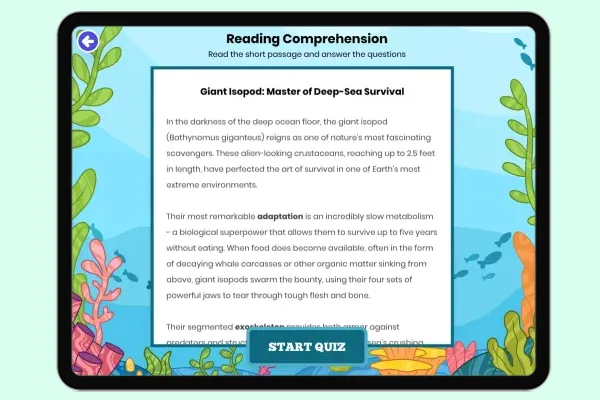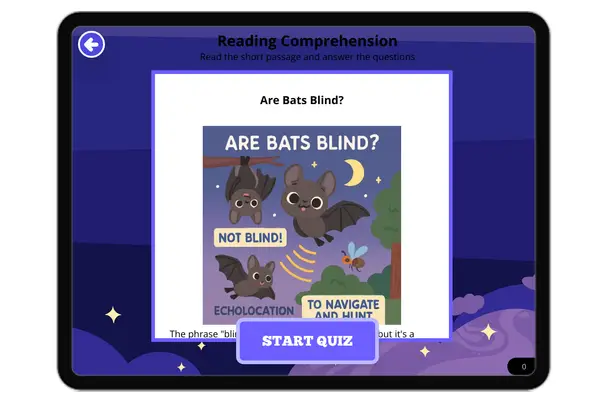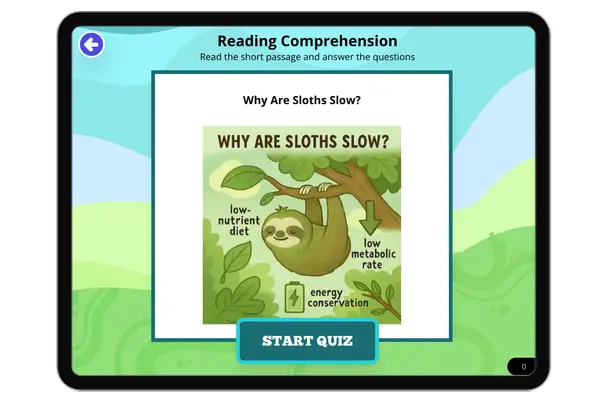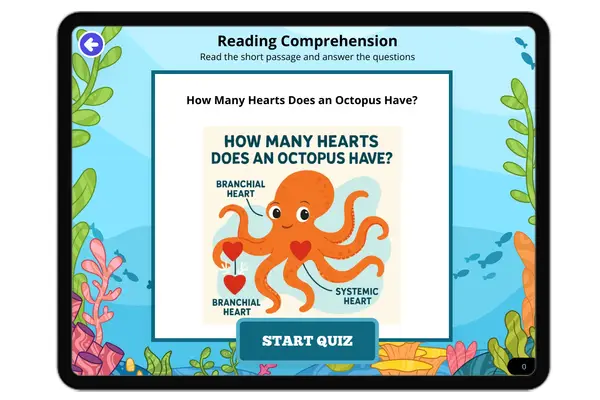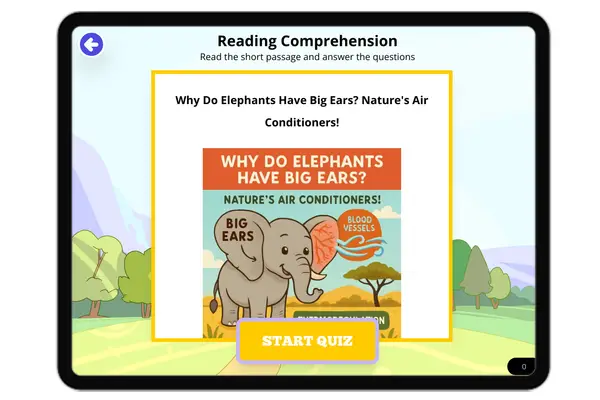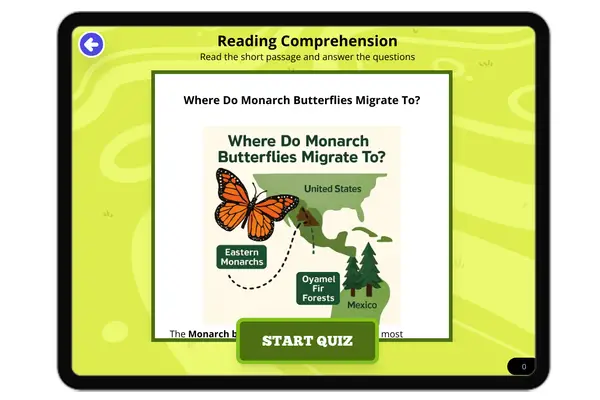Reading Results
The Future of the Great Barrier Reef
This passage examines potential future scenarios for the Great Barrier Reef in the face of ongoing climate change. It di...
RI.3.8RI.4.8
Beaver The Builder Animals
This passage explores NGSS K-ESS2-2 through examples of animals modifying their environment. Students learn how differen...
ESS2-2RL.1.1
How Plants and Animals Change Their World
This passage addresses NGSS K-ESS2-2 by demonstrating how plants and small animals can make significant changes to their...
ESS2-2RL.1.1
Mole's Digging
This passage addresses NGSS K-ESS2-2 by showing how moles unintentionally create beneficial environmental changes. Stude...
ESS2-2RL.1.1
Spider's Food Web
This passage supports NGSS K-ESS2-2 learning through observations of spider web construction. Students discover how smal...
ESS2-2RL.1.1
Dumbo Octopus: Deep-Sea Survivor with Elephant Ears
This passage aligns with NGSS standard MS-LS2-4, investigating the Dumbo octopus's unique adaptations to deep-ocean envi...
MS-LS2-4RI.6.3RI.7.3RI.8.8
The Giant Isopod: Biological Evolution
This NGSS passage examines how giant isopods evolved for deep-sea survival, including slow metabolism for food scarcity,...
MS-LS4-4RI.6.3RI.7.3RI.8.8
Barreleye Fish: The Deep-Sea Telescope
This science passage explores the barreleye fish's extraordinary adaptations aligned with NGSS standard MS-LS2-4 (Ecosys...
MS-LS2-4RI.6.3RI.7.3RI.8.8
Giant Isopod: Master of Deep-Sea Survival
This NGSS-aligned passage (MS-LS2-4) examines the giant isopod's remarkable survival strategies in deep-sea ecosystems. ...
MS-LS2-4RI.6.3RI.7.3RI.8.8
The Leafy Sea Dragon: Nature's Living Seaweed
This NGSS-aligned passage explores how leafy sea dragons (Phycodurus eques) demonstrate key life science concepts for mi...
MS-LS2-1RI.6.3RI.7.3RI.8.8
Anglerfish: The Deep-Sea Hunter with Bioluminescence
This passage aligns with NGSS standard MS-LS1-4 (Adaptations), investigating the anglerfish's extraordinary bioluminesce...
MS-LS2-4RI.6.3RI.7.3RI.8.8
How Does Cryptobiosis work
This passage explains cryptobiosis, the process where organisms like tardigrades pause their metabolism to survive extre...
MS-LS1-3RI.6.3RI.7.3RI.8.8
Snow Leopard Adaptations
Snow leopards are master survivors of harsh mountain environments. This passage explores their specialized adaptations l...
MS-LS2-CRI.6.3RI.7.3RI.8.8
Arctic Fox: Remarkable Color-Changing Adaptation
This NGSS-aligned passage (MS-LS4-4) examines the Arctic fox's remarkable seasonal color change from winter white to su...
MS-LS2-4RI.6.3RI.7.3RI.8.8
Adaptations: How Traits Help Organisms Survive
This NGSS-aligned middle school science passage explains the concept of adaptations and how they help living organisms s...
MS-LS3-1MS-LS3-2
Are Bats Blind?
This reading passage, titled "Are Bats Blind? A Myth Debunked!", directly addresses a common misconception about these f...
Why Are Sloths Slow?
This science reading passage, titled "Why Are Sloths Slow? An Energy-Saving Strategy!", explores the fascinating reasons...
How Many Hearts Does an Octopus Have?
This interactive science reading passage, titled "How Many Hearts Does an Octopus Have? A Triple Beat!", answers a commo...
Why Do Elephants Have Big Ears?
This engaging science reading passage, titled "Why Do Elephants Have Big Ears? Nature's Air Conditioners!", answers a co...












